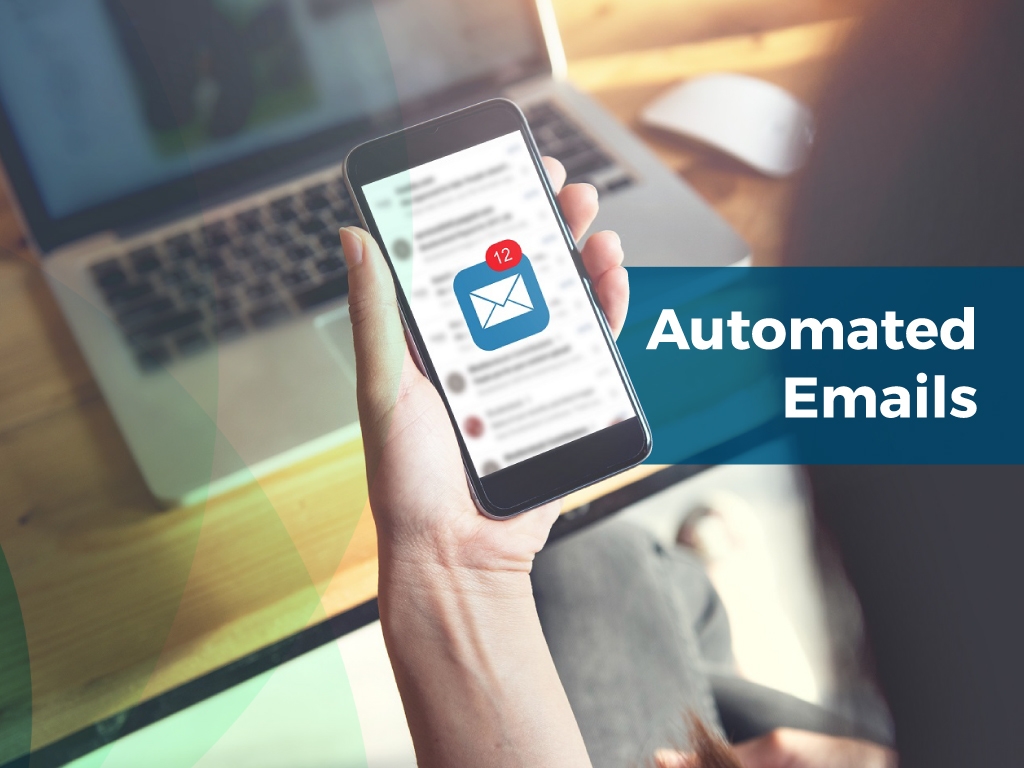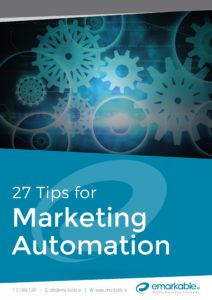4 Ways to Boost Sales with Marketing Automation Tools
If you’re a marketer considering the adoption of new marketing automation tools or software, your boss is probably echoing what Cuba Gooding Jr. said in the movie Jerry McGuire:
“Show me the money.”
According to Gleanster, 77% of CMOs at top-performing companies say their primary reason for implementing sales and marketing automation is to increase revenue. When sales and marketing join to leverage customer data and rally around well-nurtured prospects, growth seems obvious.
But how exactly do marketing automation tools help you close more deals?
This post will show you how marketing automation can move the needle at your company. To maximize your marketing investment, sales and marketing must work in concert to apply customer data and nurture leads until the final sale. Fortunately, marketing platforms offer a full suite of features to do just this.
1. Use Lead Scoring to Deliver Sales-Qualified Leads

According to MarketingSherpa, 61% of B2B marketers send all leads directly to sales, yet only 27% of those leads are qualified. This is why sales reps often complain about receiving unqualified leads.
Determining if prospects are ready to buy can be difficult, but marketing automation allows you to score leads so you can more accurately prioritize them.
Lead scoring is an automated process that adds or subtracts points from a lead, depending on actions taken or not taken. Because marketing automation tracks visitor behavior, you’ll know what leads are looking at and for how long. Use this behavioral data (plus other demographic data) to gauge whether each lead fits your buyer profile.
For example, above we see Paul Schaffer’s lead score is 498. This score accounts for factors such as:
- Reading early-stage email content (+3)
- Attending a webinar (+7)
- Visiting any website page (+1)
- Viewing a pricing page (+10)
- Watching a demo (+10)
- Unsubscribing from email list (-5)
- Inactivity (-1 per month)
Once the lead has passed the threshold you set, it’s time for a sales call. This shortens the sales cycle because it ensures sales reps don’t waste time on unqualified leads. Lead scoring qualifies leads for you, so sales reps can close the right leads at the right time – no more guesswork.
2. Segment Your Leads

Segment your leads to improve your targeting capabilities and push leads to become sales-ready sooner.
According to MarketingSherpa, 70% of leads are not ready to become customers due to a lack of nurturing. Increase the impact of automated messaging by segmenting leads by industry, role, company size, and position. Be sure to account for behavioral signals and lead scoring when creating your lists. This helps you create rich customer profiles that facilitate both marketing and sales functions.
Empower your email marketing campaigns by providing specific content to each lead. Start this process by segmenting your leads to maximize the impact of your marketing automation, and increase sales as a result.
3. Personalize Every Interaction

Research by Accenture found 75% of consumers are more likely to buy from retailers that call them by name, recommend products based on past purchases, or know their purchase history.
Your digital experience is your brand. Marketing automation is the smart way to satisfy modern consumers’ desire for relevant, personalized brand experiences across every channel.
If done right, personalization gives your audience that 1:1 experience they crave, while also minimizing manual communication. By leveraging behavioral and demographic data, you can give customers content that’s suited to their interests and activities – without lifting a finger. And since every customer interaction provides additional insight, your brand experience becomes increasingly relevant across channels. Visitors feel understood, which ultimately incentivizes them to return.
One way to enhance the customer experience is by using lead and customer data to personalize your website and landing pages. Successful e-commerce brands serve return customers products that align with their previous browsing history. This elevates the shopping experience, improves time on page, and increases sales.
To drive conversions, create an outstanding impression every time someone visits your site.
4. Easily Nurture Sales with Automated Emails

Automated emails perform 3x better than other types of email. Because they are triggered based on lead actions, automated email is a seamless way to sustain conversation with prospects and turn them into customers.
For example, if a prospect downloads an ebook, you can send a follow-up email to ensure they read it. When a customer views a pricing page, send an email created for interested customers to facilitate the sales process.
The sales cycle continues to lengthen as more decision-makers are involved on the purchasing end. Keep the conversation going with dynamic emails that change based on the attributes, interests, and actions of the recipient. Whether you’re dealing with a marketer, a CEO or anything in between, your emails should always speak to the specific needs and concerns of the recipient.
Serving your email segments consistent, relevant emails is the hands-off way to nurture leads without wasting your sales reps’ time.
Moving the Needle

To more effectively attract and nurture prospects, savvy marketers rely on marketing automation tools including lead scoring, personalization, and segmentation, to name only a few. Because marketing automation shares and collects information simultaneously, leading brands can target leads with behavioral and triggered messaging to drive desired actions in real-time. With full control and visibility across the buyer’s journey, sales and marketing can work in concert to convert more leads to sales.





